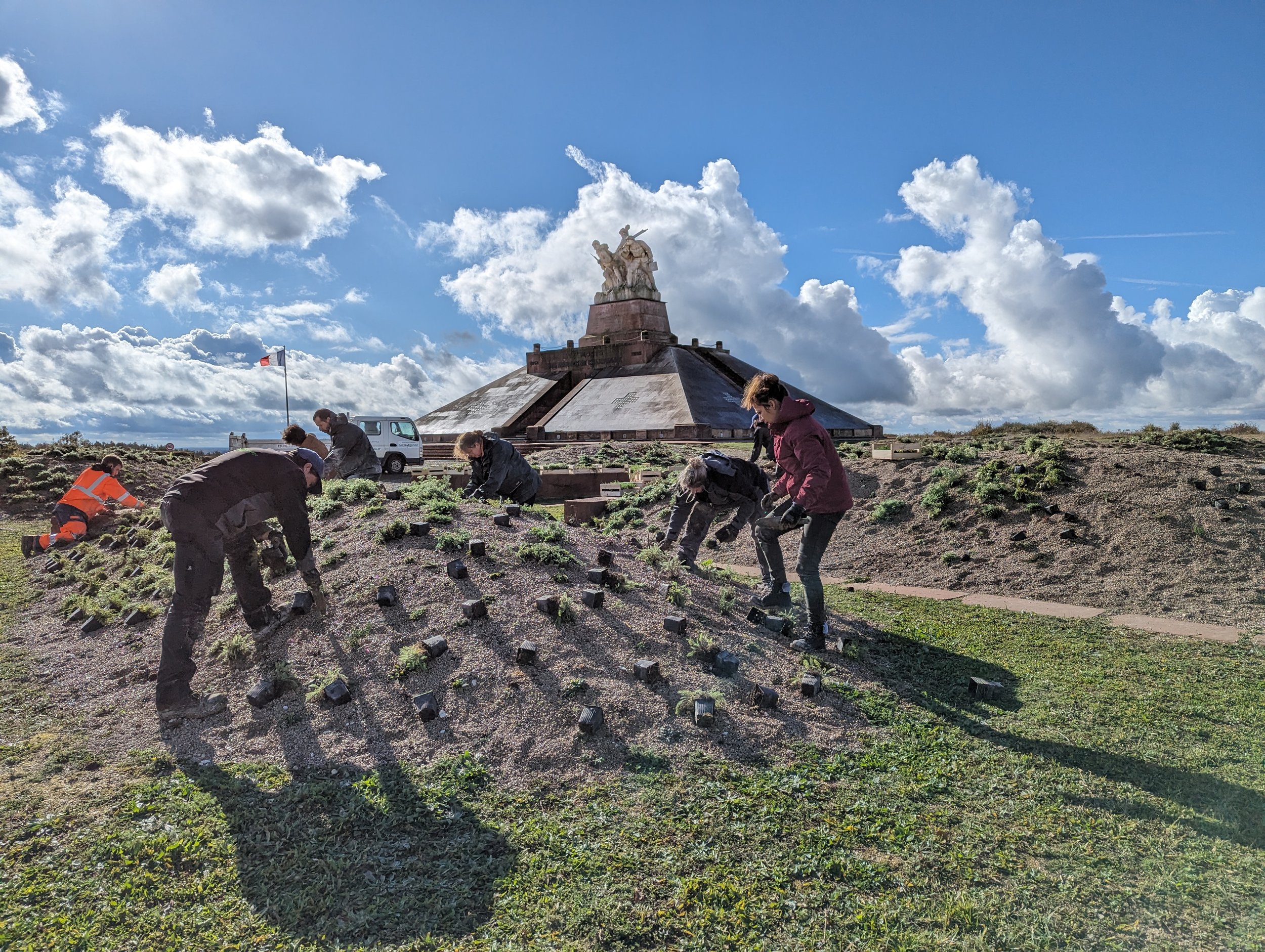Art & Gardens
American Peace Garden
Lands of Promise
Monument to the Dead of the Champagne Armies and Navarin Ossuary
Once a site of confrontation and destruction, today a place of remembrance and celebration of peace, the Navarin Farm monument-osuary (51) is part of the shared history of France and the United States. A history as old as the United States itself, marked by mutual aid between the two countries and the defense of common values, tolerance and freedom.
The Land of Promise garden evokes the time needed to rebuild and the importance of exchanges to achieve this.
Inspired by the marks left on the landscape by the war - in particular the front line dug by the soldiers - the garden is composed of embankments separated in the middle, joined by stone slabs, which act as links. The walker can thus circulate between these spaces and settle on the seats located at the edge of the slope to enjoy the view. While the trench was often the only horizon for the soldier during the fighting, the garden is symbolically turned towards the surrounding landscape in order to offer new perspectives to the viewer.
Each slope has its own identity, its own community of plants that, over time, will move, mix and cohabit with the other plants, enriching the plant compositions. Some of the plants chosen come from the United States; others grow only in Europe. However, they are all tolerant of the site's sometimes harsh weather conditions and adapted to dry land.
With a wide variety of ground cover plants, the garden's composition contributes to its ecological and sustainable nature. This illustrates the understanding and resilience necessary for both the garden and the people to flourish and fulfill their promise.












INFORMATION
Owner : Association Art & Jardins (site : 51)
Surface : 6 hectares
Amount of work : NC
Schedule: competition winner 2021 - delivery November 2022
Team : David Simonson, Coralie Taupin, Gerzay Paysage, Art & Jardins
Categories : Vosges sandstone, artisanal stone, earth mounds, embankments, ground cover plants, alternative plants to grass, native plants, ossuary, historical monument






